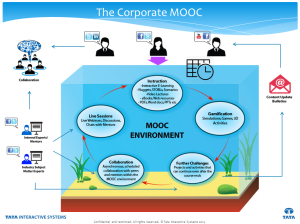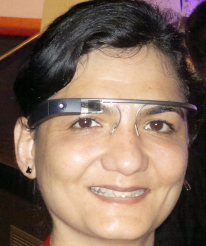Can MOOCs be the trigger to fully engage Senior Execs in continuous self-development?
In his speech on my company, Tata Interactive System’s, annual party earlier this year, my CEO, Sanjaya Sharma, when talking about current exciting times and the fast changing landscape of the ed-tech world with the entry of the likes of wearable technology et al, went on to share his experience with one of the latest phenomena in the education world – MOOCs. He reflected on the past couple of decades by stating “… there was a time when I thought of something I wanted to know more about, I ‘googled’ … and now I ‘MOOC’.”
I promptly nodded my head in agreement. The MOOC is no longer only an acronym; it is already a verb.
After a sort of longish journey through a plethora of debates and debacles in the higher ed world, MOOCs are now propping up in the corporate world. Will they work?
Well, it has taken some time to realize that those very characteristics that are unique to a MOOC (their massiveness, openness, connectedness, and their online format) and are not (yet?) working as intended in the academic world could actually find application in the real world.
The corporate world has a large population to train or up-skill; there is almost always a dearth of facilitators; taking time out for training has always been a constraint; and most importantly, there has always been a desire to foster peer-to-peer coaching and learning amongst the corporate learners. So, why not?
With this background, I decided to go back to my white paper on Instructional Design for MOOCs and pondered over whether the same design philosophy that I had chalked out for MOOCs in the higher ed world could also work for the corporate learners.
Meanwhile, Joanna Kori, who has joined us as a Learning Consultant in the UK read my white paper and came back with some constructive feedback, which, in turn, started a series of debates and discussions on the topic. With choices between two extremes—a purely behaviorist approach that xMOOCs (the more popular variety of MOOCs offered by companies such as Coursera, edX et al) tend to follow and the very chaotic and disorganized approach of a cMOOC (connectivist MOOCs pioneered by well-known researcher and theorist George Siemens and his colleagues Stephen Downes and Dave Cormier), both of us agreed on a middle path, albeit slightly tilted toward the connectivist model.
At this point, Sahana Chattopadhyay, my colleague and another experienced ID, joined our discussions, bringing in her vast social media experience gained during her prior tenure as an L&D Consultant and Community Manager.
Charged with extremely valuable inputs from both these ladies, I was finally able to come up with a model –the Fish Tank model – for a corporate MOOC.
On 6th March 2014, Tata Interactive Systems called for a Webinar to present this model to the outside world including our corporate clients. Interesting comments and questions poured in from the audience, confirming the need to start designing custom MOOCs for corporates.
To know more about how our Corporate MOOC model can be used to engage senior executives in continuous self-development, access the recording of our Webinar at http://youtu.be/ZfsB-7js958


